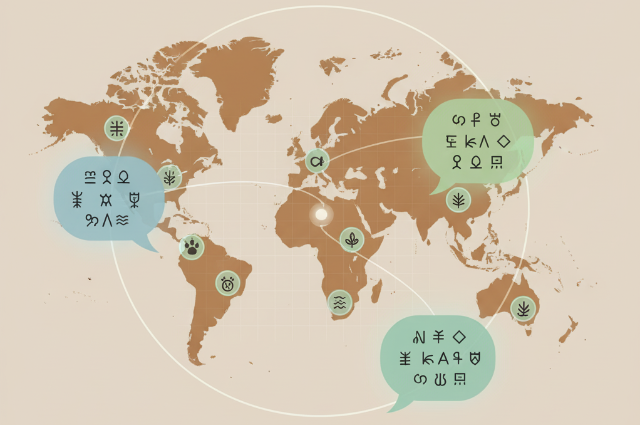
Indigenous peoples’ language represents the complex picture blanket between knowledge, culture, identity, and history for local communities around the world. Nevertheless, it dies striking, an indigenous language every other week, and many more flavors on the border of extinction due to historical injustice, globalization, and assimilation pressure. Within words, grammar, and stories about these languages are the entire world's interviews – they accepted the ways to understand ecosystems, kinship systems, time, and spirituality. Immediate calls to protect both these languages and sacred cultural places, where they always bloom, are now answered by a mixture of ground-level activism, legislative measures, and innovative mapping technologies, which change societies, researchers, and decision makers in this crisis.
The struggle to revive Indigenous languages is a struggle to restore dignity and cultural sovereignty in the heart. In Canada, the remnants of trauma from a century of residential schools, which suppress the native tongue and in turn remain, push the channels of cultural heritage and intercontinental transfer. For example, the Nunavut region provides hope through the Inuit Language Protection Act, which provides extensive rights for the use of Inuit in a single language in public life -from public services to private companies -signs. Just as Paraguay has groundbreaking bilingual education to protect Guarani, similar approaches get traction through Maori “language-proof” in New Zealand, where older children are immersed in TE Reo Mori, which nourishes the future generations of the speakers.
The actual world efforts are deep into local communities. In Mexico, very few speakers in indigenous languages such as Purépecha and Mix have survived, and large meetings with activists and language advocates can sometimes beat the remaining oldest who remember daily interactions in these heavy. In Brazil, many new projects such as IBM-funded AI equipment, youth documents, which help pass language under danger in language, digital tools with oral traditions, are combined.
Cultural mapping has proven to be a transformative approach, occupying the intersection of language, country, and traditional practice. Unlike traditional mapping, which focuses on geography and administrative boundaries, indigenous peoples’ cultural mapping centers make a place important in terms of history, singing, migration path, holy sites, hunting area, and ecological student knowledge. In Australia, organizations such as the Vinima partner create direct maps with indigenous communities, which create both specific cultural monuments, such as concrete heritage, objects, and websites, and abstract values, such as spiritual stories and dreamtime stories.
From a technical point of view, the participation mapping initiative is increasingly mixing oral history with GPS and GIS (geographical information system) technology. Modern mapping allows indigenous environments to record the locations of sacred places, traditional plants, and ancestors’ trails, which convert local stories and knowledge into geopolitical data with accuracy. For example, in the Amazon pool, indigenous communities use GPS units to track animal population and environmental changes, and integrate their area data with satellite images to make the case in legal disputes or protective schemes.
A convincing example is Colombia’s initiative to create the first official map in the country, one of the most endangered, the Cofán language. The project, a collaboration between government cartographers and the oldest in society, not only preserves linguistic knowledge, but also preserves a deep function of spatial justice – reinstating the indigenous language as a tool for navigation. In Canada, the ReadAlong Studio project supports the production of high-quality, interactive language resources, which also enables small communities to generate digital archives and educational equipment to suit local requirements.
The technical promise of mapping is extended to education and cultural tourism. In classrooms all over the world, interactive, 3D maps now allow students to know about practically all indigenous areas and to learn about their meaning through the name and oral history of indigenous peoples. Such platforms are promoting more and more cross-cultural understanding and nutritional awards for traditional land management practices and environmental protection philosophy. Cultural tourism initiatives, designed in collaboration with local communities, utilize these digital maps to demonstrate cultural assets, protect sensitive sites, and respect indigenous peoples’ sovereignty of stories and space.
Important significance is the term indigenous data -SOVEREIGNITY. As cultural mapping becomes more digital, local communities can create safe, cloud-based archives and even protect, control, and confirm knowledge on their terms using blockchain technology. This is more than the living archive database, combining high-resolution images, traditional place names, and cultural practices in ways that not only reach future generations but also build meaning in each entry.
Protecting indigenous languages and cultural places is more than a symbolic gesture of diversity. Each language contains precious scientific, environmental, and medical knowledge, most of which is irreparable. There is an old understanding of medicinal plants by losing to a language, climate adaptation, and ancient understanding of permanent resource management. Indigenous people’s knowledge system, often hidden in language and location, is now recognized as necessary for global conservation of biodiversity, climate flexibility, and sustainable development.
Throughout the continents, this effort is both a breed and an identity confirmation over time. Cooperative convergence of tradition and technology-language nesting programs, AI-I-operated translation tools, GPS mapping, partnership GIS, and socially driven digital archives future highlights where indigenous peoples control the inheritance, map their future with their own words and maps. When these initiatives are expanded, they not only protect the irreparable cultural treasures, but also inspire a new honor to the knowledge and flexibility of indigenous peoples in the design of a fairer and durable world.
References
- https://www.winyama.com.au
- https://www.maplibrary.org
- https://www.sciencedirect.com
- https://www.sciencedirect.com
